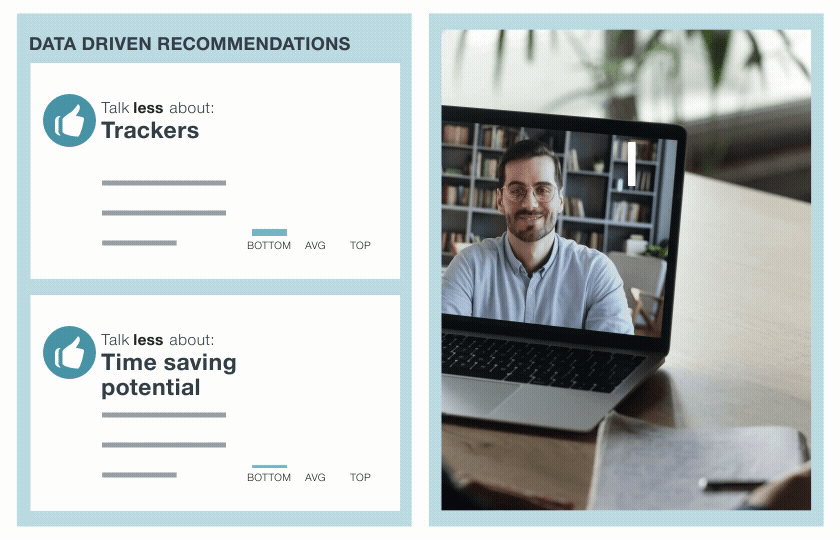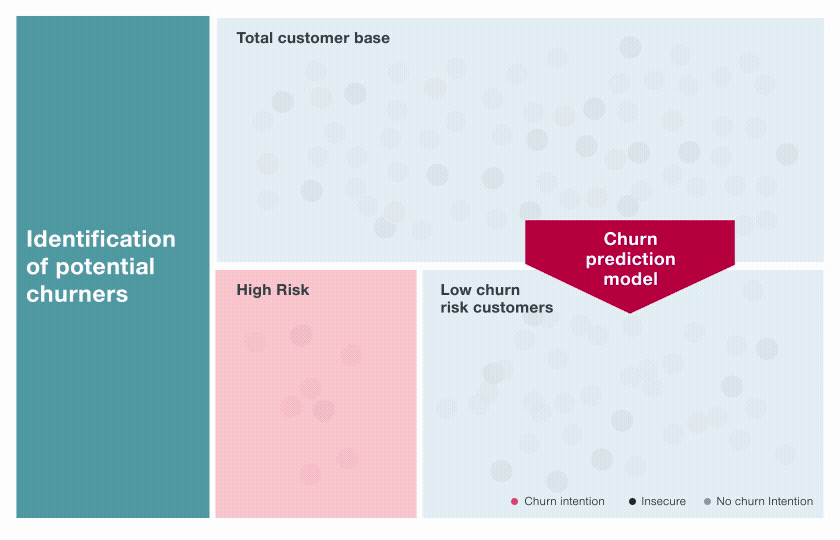Impossible to increase your leads, hit rates, and profitability due to the volatile economic environment? Think again. The key to success lies in your existing data!
There’s no denying that geopolitical, social, and economic uncertainties create several challenges for B2B sales and marketing departments right now. Inflation levels are reaching record highs, with huge negative impacts on spending. Meanwhile, increasing energy costs put pressure on margins, causing economic instability and fund shortages. Sales and marketing must work in these increasingly challenging conditions, accompanied by budget cuts, talent gaps, and layoffs.
How many sales and marketing departments have already accepted defeat?
Now imagine there was an abundant and untapped resource in your company that could help you grow throughout this difficult period and beyond.
We’re talking about a:
- 2-4% increase in return on sales
- 12-25% increase in conversion
- More than 10% increase in share of wallet
- 5-15% reduction in customer churn
- 5-10% increase in sales
Churning customers and volume losses are not inevitable. This resource exists, and you’re probably already collecting vast amounts of it.
Time to shine the light on data
Many B2B companies today generate masses of data – from customer information, transactional data, financial records, employee data, operational data, marketing data, and more. But without a strategic approach, you may have overlooked a golden opportunity to align your data initiatives with your business goals.
To help our clients achieve substantial, proven, and immediate impact, we have identified five levers in the digital space for B2B companies – using data, tech, and creativity as a catalyst for growth.
1. Pricing quick wins to improve your hit rate
Utilize your existing data to analyze your hit rates and price levels. To do this, you need to merge relevant data sources (e.g., product, customer, and transactional data), and then segment them by customer peer groups and comparable sales situations.
This will enable you to map where price quality aligns with successful deals, and where it leads to lost ones.
The next step is to redefine your price targets – increasing them where customers receive significantly lower prices compared to their peers and conducting further customer research where deals within a specific peer group are lost. Of course, to roll out these new prices to customers, the sales team needs to be equipped with the right price guidance, training, and success monitoring so that you can realign where necessary.
This analysis is easy to scale and can be applied to all business types and customers.
Want to improve your hit rate? Here’s our quick checklist:

If you answered mostly “no” to these questions, then there’s no time to lose. Start tapping into your customers’ willingness to pay today!
2. Turn potential customers into paying ones using behavioral nudging techniques
There are numerous behavioral economics techniques that you can combine with existing data to enhance your sales approach and boost conversion rates. Our behavioral economics toolbox includes a multitude of simple but powerful nudges that our experts can tailor to your sales organization. Here are a few examples:
Personalized recommendations and real-time analytics: We can set up a system that automatically provides recommendations and prompts directly on-screen during sales talks.

Gamified incentive systems: We can customize your system to compare the individual sales performance with the top performer’s sales activities. Thanks to prominently displayed incentives, this system nudges your sales team to change their sales approaches and includes gamification effects such as contests and points collection.
Behavioral surveys: We can prepare a survey that is regularly sent to sales reps to ask them about their sales activities. After answering a few questions, the rep receives best practices and a comparison to their peers using data on how the “best” reps answer.
Are you driving your conversions to the best of your ability? Here’s our quick checklist:

Answered mostly “no”? Then let’s have a chat about how to boost your sales performance.
3. Sell more products and services through data-driven cross-selling
You need three key data sources if you want to boost cross-selling:
- Knowledge-based data on market dynamics and competitor behavior
- Customer attributes and transactional data to segment customers and make peer recommendations, e.g., “Customers who purchased this product also purchased...”
- Customer attributes and lifecycle data to establish different services along typical customer lifecycles
This will enable you to better personalize your customer offers – typically leading to a 15 percent revenue uplift.
We can develop a recommendation system and supporting algorithms to improve your data-driven cross-selling campaign. This system incorporates behavioral triggers along the customer journey, presenting personalized prompts and nudging customers toward a preferred direction or action (e.g., to find out about a new product).

Seven factors to elevate your cross-selling activities
Meanwhile, we help you develop smart product bundles and promotions, reducing entry barriers for new products and features and boosting cross-selling with a given product and across product groups.
We do all of this by using your existing data in a customer data platform (CDP) which is supported by iterative test cycles to learn, adapt, and improve and rapidly identify the most impactful cross-selling initiatives.
Are you tapping into your full cross-selling potential? Here’s our quick checklist:

If you answered mostly “no”, then you’re likely neglecting valuable cross-selling potential. Let’s talk about how you can increase your share of wallet.
4. Reduce churn and get more from your high-value customers
The costs of acquiring new customers are five times higher than the costs to retain existing ones – which is especially important to remember during difficult economic times.
Companies already hold a lot of information that can indicate customer churn. However, they don’t always interpret this data quickly or correctly so that they can intervene. Figures like order volume, deviations in an expected order, number of contacts, etc. all can help you predict churn.

The aim is not to keep every “churner.” Rather, you want to focus your retention efforts on the high-value customers and develop segment-specific measures along the customer journey to increase loyalty. This can be combined with targeted sales boosters such as cross-, up- and deep-sell campaigns to increase key spend levels among high CLTV customers.
How well are you reducing customer churn?

Answered mostly “no” and churn is still keeping you up at night? We can help you identify and retain those valuable customers you definitely don’t want to lose.
5. Reactivate customers with our data-driven approach
Thanks to our reactivation algorithms, you can also use your data to revive business with customers who have already churned. Here we take data on inactive but valuable customers, e.g., time since last sale, last portal app activity, etc. We also use machine learning techniques to identify:
The next-best channel: Looking at relevant omnichannel options to meet customer preferences
The next-best moment: Using customer data and calendar events (e.g., Christmas) to determine ideal timing for reactivation
The next-best content: Ensuring your communication/campaigns are in line with individual customer needs (personalized and relevant)
But remember: it’s important to ensure customers are eligible for contact in line with data privacy and consent regulations.









